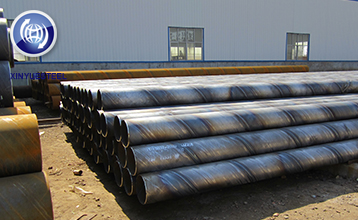Tax rebate may be difficult to quickly "cool down" steel prices
May. 20, 2021
The "boots" of steel product tariff policy adjustment finally landed. On April 28, the Ministry of Finance and the State Administration of Taxation issued an announcement stating that since May 1, the export tax rebate for 146 hot-rolled plates, cold-rolled plates, coated plates, stainless steel, pipes and other steel products will be cancelled. On the same day, the Customs Tariff Commission of the State Council issued an announcement stating that from May 1st, tariffs on some steel products will be adjusted: zero import tariffs on pig iron, crude steel, recycled steel raw materials and other products will be implemented, and ferrosilicon, ferrochrome, Export tariffs on products such as high-purity pig iron. So far, the tariff adjustment policy that has been circulating in the market for months has finally landed.
The author believes that the purpose of this round of adjustment is to "promote suppression", ensure the balance of supply and demand in the domestic market, and stabilize the cost pressure on domestic steel companies caused by the increase in iron ore prices by promoting the import of primary products, and at the same time by canceling export tax rebates. Repair the demand gap in the domestic market.

Some market participants said that this round of adjustments is a negative factor for the rising domestic market. However, in the author's view, in the short term, this round of adjustments is unlikely to have a strong impact on the existing market. The existing supply and demand structure will not be quickly broken due to tariff policy adjustments, and steel prices will not fluctuate sharply as a result.
On the one hand, news of tariff adjustments has been circulating in the market for several months, and the possible negative effects of tariff adjustments have basically been digested in advance. On the other hand, whether it is to expand the import of primary steel products to hedge against rising costs, or to promote the return of export resources, it will take some time to really take effect. In the short term, the market is unlikely to have large fluctuations.
As for the long-term impact of this round of adjustments, the author believes that there are two important points.
One is to expand the import of recycled iron and steel raw materials, which will break the dominance of iron ore. Once the price of iron ore is stabilized, the steel cost platform will move downward, driving steel prices into a phased adjustment cycle.
Second, the price difference between domestic and foreign markets fluctuates. At present, although domestic steel prices continue to rise, the domestic market is still in a "price depression" in the international market. Especially for hot-rolled products, even if the export tax rebate is cancelled, the domestic hot-rolled product prices are still about US$50/ton lower than other countries, and the price competitive advantage is still there. As long as the export profit margin meets the expectations of steel enterprises, simply canceling export tax rebates will not be able to quickly realize the overall return of export resources. In the author's opinion, the turning point of the return of steel export resources is expected to occur when domestic steel prices rise again or when overseas market prices are high.
Generally speaking, the adjustment of steel import and export tariff policy will bring certain repairs to market supply, demand and costs. However, with the policy of reducing crude steel production unchanged, whether it is short-term or long-term, the market is likely to remain at supply revenue. Tight state. Under this circumstance, it is difficult for the steel price to see a sharp decline in the later stage, and more will be in a high consolidation situation.



